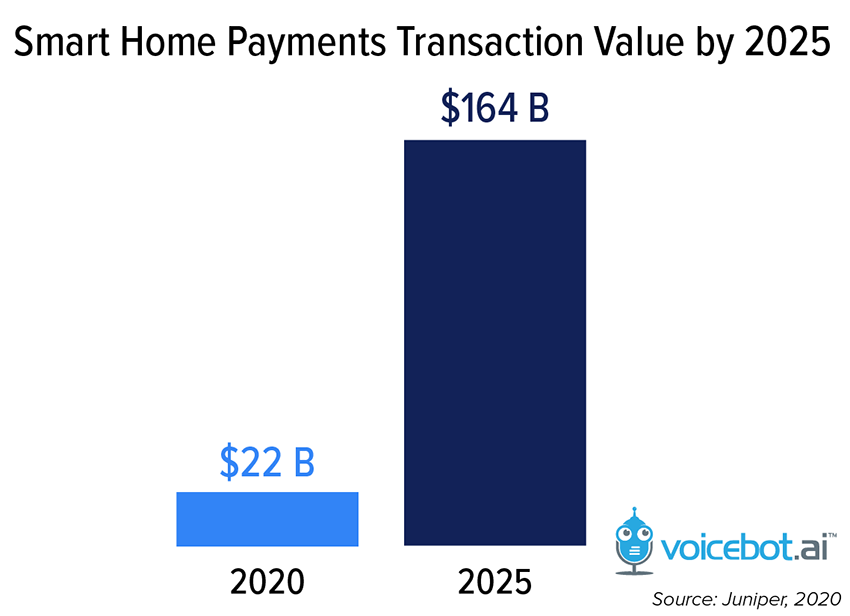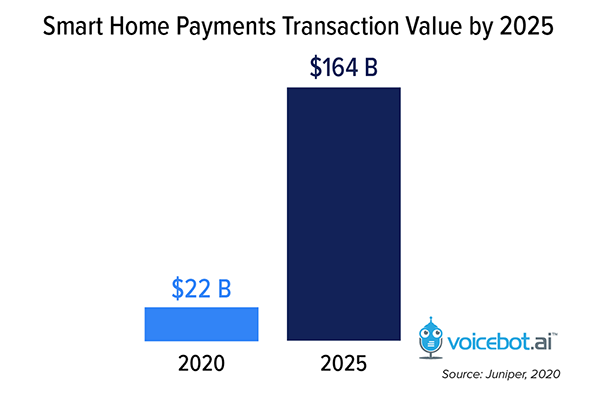Transactions With Voice Assistants on Smart Home Devices Will Hit $164B in 2025: Report
 Smart home devices will carry out more than $164 billion worth of transactions in 2025, according to a new report from Juniper Research. That’s more than 630% growth in five years from the $22 billion expected this year, the result of more opportunity to use voice assistants to purchase items.
Smart home devices will carry out more than $164 billion worth of transactions in 2025, according to a new report from Juniper Research. That’s more than 630% growth in five years from the $22 billion expected this year, the result of more opportunity to use voice assistants to purchase items.
Seeing and Speaking
The enormous spike in transactions carried out with voice assistants can be attributed to a few factors. More people owning smart displays will help boost how comfortable people are with using their voice to make purchases because they can actually see what they are going to buy and observe the process. The report suggests that reaching that number will need connections between smart speakers and smart displays in case the purchase begins as an audio search before the user decides to take a look at the visual and confirm the purchase. Another major driver to voice commerce at home will be smart TVs, for similar reasons. Juniper predicts that more than a fifth of the 2025 value, almost $33 billion, will flow through smart televisions. In comparison, less than 1% of transactions will happen via connected appliances. That’s not surprising as any such appliance like a refrigerator would need to have all of the features of a smart speaker or display to compete with a smart TV.
The core of the expected transactions is the availability and use of digital wallets. Smart speakers and related devices that can connect to digital wallets offered by Amazon, Google, and Apple, including those connected to services like PayPal, are going to reduce friction for making purchases. There will be plenty of options to connect as Juniper expects there will be 2.7 billion devices capable of handling payments by 2025.
“Smart home device vendors must prioritise payments acceptance by merchants; making the integration of digital wallets a top priority for smart home vendors,” research co-author Nick Maynard said in a statement. “This integration will enable smart home vendors to deliver compelling and familiar user experiences, whilst also ensuring the security required for success.”
Voice of Commerce
Though the dollar amount stands out, there is plenty of reason for optimism about the spread of voice commerce overall. People are experimenting with the concept, and the ongoing COVID-19 health crisis and subsequent lockdowns have only encouraged people to use smart speakers and smart displays more and with an eye for making purchases. Market data aggregator eMarketer predicted 31 million Americans shopped with a smart speaker in 2019. Multiple surveys from different sources have consistently found that groceries and household goods are what people are most likely to buy with a voice assistant. Whether the use of a smart display and getting the chance to see what you buy before completing the purchase might affect the decision isn’t clear.
And the survey didn’t account for the fast-growing mobile use of voice assistants. Alexa now lets drivers pay for gas while driving, and 7-Eleven launched a similar method for people to ask Apple’s Siri voice assistant to handle gas payments as part of its Fuel Loyalty program. Even when focused on making purchases at home, worries about privacy tend to limit people’s willingness to do their shopping by voice. How much those attitudes will have to change to make the $164 billion feasible is harder to predict.
Follow @voicebotai Follow @erichschwartz
French Grocery Chain Carrefour Debuts Google Assistant-Powered Voice Shopping









